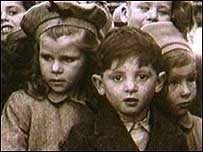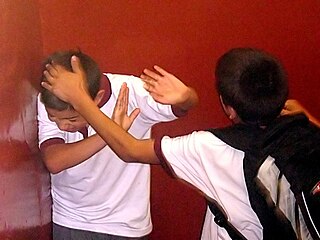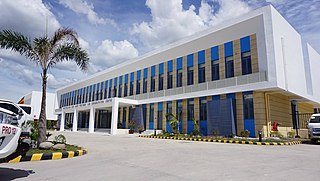Related Research Articles
Post-traumatic stress disorder (PTSD) is a mental and behavioral disorder that can develop because of exposure to a traumatic event, such as sexual assault, warfare, traffic collisions, child abuse, domestic violence, or other threats on a person's life. Symptoms may include disturbing thoughts, feelings, or dreams related to the events, mental or physical distress to trauma-related cues, attempts to avoid trauma-related cues, alterations in the way a person thinks and feels, and an increase in the fight-or-flight response. These symptoms last for more than a month after the event. Young children are less likely to show distress but instead may express their memories through play. A person with PTSD is at a higher risk of suicide and intentional self-harm.

Foster care is a system in which a minor has been placed into a ward, group home, or private home of a state-certified caregiver, referred to as a "foster parent" or with a family member approved by the state. The placement of the child is normally arranged through the government or a social service agency. The institution, group home, or foster parent is compensated for expenses unless with a family member. In some states, relative or "Kinship" caregivers of children who are wards of the state are provided with a financial stipend.

Physical abuse is any intentional act causing injury or trauma to another person or animal by way of bodily contact. In most cases, children are the victims of physical abuse, but adults can also be victims, as in cases of domestic violence or workplace aggression. Alternative terms sometimes used include physical assault or physical violence, and may also include sexual abuse. Physical abuse may involve more than one abuser, and more than one victim.
Psychological trauma or mental trauma is an emotional response to a distressing event or series of events, such as accidents, rape or natural disasters. Reactions such as psychological shock and psychological denial are typical. Longer-term reactions include unpredictable emotions, flashbacks, difficulties with interpersonal relationships and sometimes physical symptoms including headaches or nausea.
Developmental disability is a diverse group of chronic conditions that are due to mental or physical impairments that arise before adulthood. Developmental disabilities cause individuals living with them many difficulties in certain areas of life, especially in "language, mobility, learning, self-help, and independent living". Developmental disabilities can be detected early on and persist throughout an individual's lifespan. Developmental disability that affects all areas of a child's development is sometimes referred to as global developmental delay.

Child abuse or child maltreatment is physical, sexual, and/or psychological maltreatment or neglect of a child or children, especially by a parent or a caregiver. Child abuse may include any act or failure to act by a parent or a caregiver that results in actual or potential harm to a child and can occur in a child's home, or in the organizations, schools, or communities the child interacts with.
Complex post-traumatic stress disorder is a proposed psychological disorder that is theorized to develop in response to exposure to a series of traumatic events in a context in which the individual perceives little or no chance of escape, and particularly where the exposure is prolonged or repetitive. It is not yet recognized by the American Psychiatric Association or the DSM-5 as a valid disorder. In addition to the symptoms of post-traumatic stress disorder (PTSD), an individual with C-PTSD experiences emotional dysregulation, negative self-beliefs and feelings of shame, guilt or failure regarding the trauma, and interpersonal difficulties. C-PTSD relates to the trauma model of mental disorders and is associated with chronic sexual, psychological, and physical abuse or neglect, or chronic intimate partner violence, victims of kidnapping and hostage situations, indentured servants, victims of slavery and human trafficking, sweatshop workers, prisoners of war, concentration camp survivors, and prisoners kept in solitary confinement for a long period of time, or defectors from authoritarian religions. Situations involving captivity/entrapment can lead to C-PTSD-like symptoms, which can include prolonged feelings of terror, worthlessness, helplessness, and deformation of one's identity and sense of self.
Gender is correlated with the prevalence of certain mental disorders, including depression, anxiety and somatic complaints. For example, women are more likely to be diagnosed with major depression, while men are more likely to be diagnosed with substance abuse and antisocial personality disorder. There are no marked gender differences in the diagnosis rates of disorders like schizophrenia, borderline personality disorder, and bipolar disorder. Men are at risk to suffer from post-traumatic stress disorder (PTSD) due to past violent experiences such as accidents, wars and witnessing death, and women are diagnosed with PTSD at higher rates due to experiences with sexual assault, rape and child sexual abuse. Nonbinary or genderqueer identification describes people who do not identify as either male or female. People who identify as nonbinary or gender queer show increased risk for depression, anxiety and post-traumatic stress disorder. People who identify as transgender demonstrate increased risk for depression, anxiety, and post-traumatic stress disorder.
Childhood trauma is often described as serious adverse childhood experiences (ACEs). Children may go through a range of experiences that classify as psychological trauma; these might include neglect, abandonment, sexual abuse, emotional abuse, and physical abuse, witnessing abuse of a sibling or parent, or having a mentally ill parent. These events have profound psychological, physiological, and sociological impacts and can have negative, lasting effects on health and well-being such as unsocial behaviors, attention deficit hyperactivity disorder (ADHD), and sleep disturbances. Similarly, children with mothers who have experienced traumatic or stressful events during pregnancy can increase the child's risk of mental health disorders and other neurodevelopmental disorders. Kaiser Permanente and the Centers for Disease Control and Prevention's 1998 study on adverse childhood experiences determined that traumatic experiences during childhood are a root cause of many social, emotional, and cognitive impairments that lead to increased risk of unhealthy self-destructive behaviors, risk of violence or re-victimization, chronic health conditions, low life potential and premature mortality. As the number of adverse experiences increases, the risk of problems from childhood through adulthood also rises. Nearly 30 years of study following the initial study has confirmed this. Many states, health providers, and other groups now routinely screen parents and children for ACEs.

A residential treatment center (RTC), sometimes called a rehab, is a live-in health care facility providing therapy for substance use disorders, mental illness, or other behavioral problems. Residential treatment may be considered the "last-ditch" approach to treating abnormal psychology or psychopathology.
Attachment-based therapy applies to interventions or approaches based on attachment theory, originated by John Bowlby. These range from individual therapeutic approaches to public health programs to interventions specifically designed for foster carers. Although attachment theory has become a major scientific theory of socioemotional development with one of the broadest, deepest research lines in modern psychology, attachment theory has, until recently, been less clinically applied than theories with far less empirical support. This may be partly due to lack of attention paid to clinical application by Bowlby himself and partly due to broader meanings of the word 'attachment' used amongst practitioners. It may also be partly due to the mistaken association of attachment theory with the pseudo-scientific interventions misleadingly known as attachment therapy. The approaches set out below are examples of recent clinical applications of attachment theory by mainstream attachment theorists and clinicians and are aimed at infants or children who have developed or are at risk of developing less desirable, insecure attachment styles or an attachment disorder.
Trauma Systems Therapy (TST) is a mental health treatment model for children and adolescents who have been exposed to trauma, defined as experiencing, witnessing, or confronting "an event or events that involved actual or threatened death or serious injury, or a threat to the physical integrity of self or others". TST focuses on the child's emotional and behavioral needs as well as the environments where the child lives. The treatment model includes four components that are fully described in a published manual. A clinical trial showed that TST is effective in improving the mental health and well-being of children who have been traumatized. TST has also been successfully replicated.
The Center for Child and Family Health (CCFH) is a collaboration between Duke University, The University of North Carolina at Chapel Hill, North Carolina Central University, Child & Parent Support Services, and the community, created to improve prevention and treatment of childhood trauma. Founded in 1996, CCFH has benefited approximately 16,000 children through direct treatment and established training programs. In addition to services delivered in the state of North Carolina, CCFH has provided assistance in the aftermath of national tragedies such as 9/11 and Hurricane Katrina.
The effects of domestic violence on children have a tremendous impact on the well-being and developmental growth of children witnessing it. Children who witness domestic violence in the home often believe that they are to blame, live in a constant state of fear, and are 15 times more likely to be victims of child abuse. Close observation during an interaction can alert providers to the need for further investigation and intervention, such as dysfunctions in the physical, behavioral, emotional, and social areas of life, and can aid in early intervention and assistance for child victims.
Child neglect, often overlooked, is the most common form of child maltreatment. Most perpetrators of child abuse and neglect are the parents themselves. A total of 79.4% of the perpetrators of abused and neglected children are the parents of the victims, and of those 79.4% parents, 61% exclusively neglect their children. The physical, emotional, and cognitive developmental impacts from early childhood neglect can be detrimental, as the effects from the neglect can carry on into adulthood.
Transgenerational trauma is the psychological and physiological effects that the trauma experienced by people has on subsequent generations in that group. There are two types of transmission: intergenerational transmission whereby epigenetic changes are passed down from the directly traumatized generation [F0] to their offspring [F1], and transgenerational transmission when the offspring [F1] then pass it down to their offspring [F2] who have not been exposed to the initial traumatic event. Exposure includes when the offspring is in utero.
Trauma focused cognitive behavioral therapy (TF-CBT) is an evidence-based psychotherapy or counselling that aims at addressing the needs of children and adolescents with post traumatic stress disorder (PTSD) and other difficulties related to traumatic life events. This treatment was developed and proposed by Drs. Anthony Mannarino, Judith Cohen, and Esther Deblinger in 2006. The goal of TF-CBT is to provide psychoeducation to both the child and non-offending caregivers, then help them identify, cope, and re-regulate maladaptive emotions, thoughts, and behaviors. Research has shown TF-CBT to be effective in treating childhood PTSD and with children who have experienced or witnessed traumatic events, including but not limited to physical or sexual victimization, child maltreatment, domestic violence, community violence, accidents, natural disasters, and war.
Early childhood trauma refers to various types of adversity and traumatic events experienced during the early years of a person's life. This is deemed the most critical developmental period in human life by psychologists. A critical period refers to a sensitive time during the early years of childhood in which children may be more vulnerable to be affected by environmental stimulation. These traumatic events can include serious sickness, natural disasters, family violence, sudden separation from a family member, being the victim of abuse, or suffering the loss of a loved one. Traumatic experiences in early childhood can result in severe consequences throughout adulthood, for instance developing post-traumatic stress disorder, depression, or anxiety. Negative childhood experiences can have a tremendous impact on future violence victimization and perpetration, and lifelong health and opportunity. However, not all children who are exposed to negative stimuli in early childhood will be affected severely in later life; some children come out unscathed after being faced with traumatic events, which is known as resilience. Many factors can account for the invulnerability displayed by certain children in response to adverse social conditions: gender, vulnerability, social support systems, and innate character traits. Much of the research in this area has referred to the Adverse Childhood Experiences Study (ACE) study.
Adverse childhood experiences (ACEs) encompass various forms of physical and emotional abuse, neglect, and household dysfunction experienced in childhood. The harms ACEs can be long-lasting, affecting people even in their adulthood. ACEs have been linked to premature death as well as to various health conditions, including those of mental disorders. Toxic stress linked to childhood maltreatment is related to a number of neurological changes in the structure of the brain and its function.
Adverse childhood experiences (ACEs) are identified as serious and traumatizing experiences, such as abuse, neglect, exposure to violence, substance use, and other harmful events or situations that occur within a child's household or environment. Unfortunately, exposure to ACEs within the child's community is all too common in low-income households and neighborhoods, with close to 43% of children in the United States (U.S.) living in low-income families. ACEs were first identified by the Centers for Disease Control and Prevention (CDC) and Kaiser Permanente's Adverse Childhood Experiences Study conducted from 1995 to 1997, where ACEs were examined and correlated with later-life well-being. With one in four children experiencing or witnessing a potentially traumatic event, children who grow up in an unsafe environment are at risk for developing adverse health outcomes, affecting brain development, immune systems, and regulatory systems.
References
- ↑ Berger, Lawrence M.; Bruch, Sarah K.; Johnson, Elizabeth I.; James, Sigrid; Rubin, David (2009). "Estimating the "Impact" of Out-of-Home Placement on Child Well-Being: Approaching the Problem of Selection Bias". Child Development. 80 (6): 1856–1876. doi:10.1111/j.1467-8624.2009.01372.x. ISSN 0009-3920. PMC 2836492 . PMID 19930356.
- 1 2 3 4 5 6 7 Greeson, Johanna K.P.; Briggs, Ernestine C.; Kisiel, Cassandra L.; Layne, Christopher; Ake III, George S.; Ko, Susan J.; Gerrity, Ellen T.; Steinberg, Alan M.; Fairbank, John A. (2011). "Complex Trauma and Mental Health in Children and Adolescents Placed in Foster Care: Findings from the National Child Traumatic Stress Network". Child Welfare. 90 (6): 91–108. PMID 22533044 – via EBSCOhost.
- 1 2 3 4 5 6 7 Dorsey, Shannon; Burns, Barbara J.; Southerland, Dannia G.; Cox, Julia Revillion; Wagner, H. Ryan; Farmer, Elizabeth M. Z. (2011-10-02). "Prior Trauma Exposure for Youth in Treatment Foster Care". Journal of Child and Family Studies. 21 (5): 816–824. doi:10.1007/s10826-011-9542-4. ISSN 1062-1024. PMC 3667554 . PMID 23730144.
- 1 2 3 4 5 6 7 8 9 10 11 12 13 Vasileva, Mira; Petermann, Franz (2016-09-22). "Attachment, Development, and Mental Health in Abused and Neglected Preschool Children in Foster Care: A Meta-Analysis". Trauma, Violence, & Abuse. 19 (4): 443–458. doi:10.1177/1524838016669503. ISSN 1524-8380. PMID 27663993.
- 1 2 3 4 5 6 7 8 9 10 11 12 Collin-Vézina, Delphine; Coleman, Kim; Milne, Lise; Sell, Jody; Daigneault, Isabelle (2011-04-12). "Trauma Experiences, Maltreatment-Related Impairments, and Resilience Among Child Welfare Youth in Residential Care". International Journal of Mental Health and Addiction. 9 (5): 577–589. doi:10.1007/s11469-011-9323-8. ISSN 1557-1874.
- 1 2 3 4 5 6 7 8 Zelechoski, Amanda D.; Sharma, Ritu; Beserra, Kari; Miguel, Jennifer L.; DeMarco, Mia; Spinazzola, Joseph (2013-09-15). "Traumatized Youth in Residential Treatment Settings: Prevalence, Clinical Presentation, Treatment, and Policy Implications". Journal of Family Violence. 28 (7): 639–652. doi:10.1007/s10896-013-9534-9. ISSN 0885-7482.
- 1 2 3 4 5 6 7 8 9 McCormack, Lynne; Issaakidis, Gemma L. (2018). "Complex trauma in childhood; psychological growth in adulthood: Making sense of the 'lived' experience of out-of-home-care". Traumatology. 24 (2): 131–139. doi:10.1037/trm0000139. ISSN 1085-9373.
- 1 2 3 Salazar, Amy M.; Keller, Thomas E.; Gowen, L. Kris; Courtney, Mark E. (2012-08-17). "Trauma exposure and PTSD among older adolescents in foster care". Social Psychiatry and Psychiatric Epidemiology. 48 (4): 545–551. doi:10.1007/s00127-012-0563-0. ISSN 0933-7954. PMC 4114143 . PMID 22898825.
- 1 2 3 White, Catherine Roller; O'Brien, Kirk; Pecora, Peter J.; English, Diana; Williams, Jason R.; Phillips, Chereese M. (2012), Child Maltreatment: A Collection of Readings, SAGE Publications, Inc., pp. 103–119, doi:10.4135/9781452230689.n8, ISBN 9781412995061
- 1 2 Schneider, Sophie C.; La Buissonnière-Ariza, Valérie; Højgaard, Davíð R. M. A.; Kay, Brian S.; Riemann, Bradley C.; Eken, Stephanie C.; Lake, Peter; Nadeau, Joshua M.; Storch, Eric A. (2017-10-07). "Multimodal Residential Treatment for Adolescent Anxiety: Outcome and Associations with Pre-treatment Variables". Child Psychiatry & Human Development. 49 (3): 434–442. doi:10.1007/s10578-017-0762-8. ISSN 0009-398X. PMID 28988322.
- 1 2 3 4 5 Briggs, Ernestine C.; Greeson, Johanna K. P.; Layne, Christopher M.; Fairbank, John A.; Knoverek, Angel M.; Pynoos, Robert S. (2012). "Trauma Exposure, Psychosocial Functioning, and Treatment Needs of Youth in Residential Care: Preliminary Findings from the NCTSN Core Data Set". Journal of Child & Adolescent Trauma. 5 (1): 1–15. doi:10.1080/19361521.2012.646413. ISSN 1936-1521.
- 1 2 Li, Dongdong; Chng, Grace S.; Chu, Chi Meng (2017-08-31). "Comparing Long-Term Placement Outcomes of Residential and Family Foster Care: A Meta-Analysis". Trauma, Violence, & Abuse. 20 (5): 653–664. doi: 10.1177/1524838017726427 . ISSN 1524-8380. PMC 6732825 . PMID 29333987.
- 1 2 Davidson, Emma; Whittaker, Lisa (2018-01-18). The marginalisation of care:young care leavers' experiences of professional relationships. Policy Press. doi:10.1332/policypress/9781447330523.003.0013. ISBN 9781447330523.
- 1 2 3 4 5 6 7 8 9 Ford, Julian D.; Chapman, John; Connor, Daniel F.; Cruise, Keith R. (2012-05-10). "Complex Trauma and Aggression in Secure Juvenile Justice Settings". Criminal Justice and Behavior. 39 (6): 694–724. doi: 10.1177/0093854812436957 . ISSN 0093-8548.